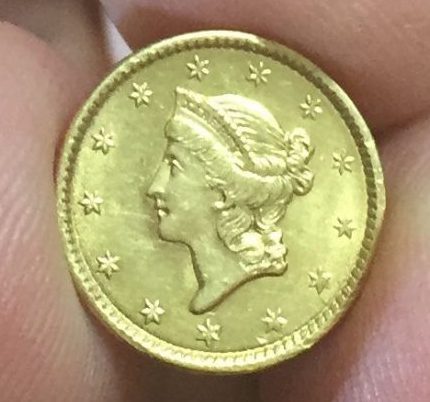With competitive prices and honest service, we are one of the best places to sell gold US Coins around the Chicago area. We accept walk-ins or you can make an appointment to sell your coins, paper money, gold, silver, estate jewelry, and diamonds!
Phone number (847) 213-0507
If you’re like many people in the Chicago area, you may have some gold coins tucked away in a drawer or safe deposit box. Maybe you inherited them from a family member, or maybe you bought them as an investment years ago. Whatever the case may be, now is the time to consider selling them – and here’s why.
First, let’s talk about the benefits of selling gold coins. Gold coins can be a great investment, but they can also be a hassle to store and maintain. By selling your gold coins, you can free up space in your home or storage facility, simplify your financial situation, and even earn some extra cash. Plus, if you’re not actively enjoying your collection, it’s just sitting there gathering dust.
Selling your gold coins in Chicago can be a profitable and rewarding experience. You will have the satisfaction of knowing that you made a smart financial decision and freed up some space in your life. So if you’re sitting on a collection of gold coins in the Chicago area, now is the time to consider selling. You’ll free up space, simplify your financial situation, and have a profitable and rewarding experience in the process. Don’t let your gold coins go to waste – sell them today!
Sell Chicago Saint Gaudens $20 Gold Coin (1907-1933), or Liberty $20 Gold Coin (1850-1907)
The double eagle is a $20 gold coin of the United States. It contains 0.9675 troy ounces (30.0926 grams) of gold, which was valued at $20 based on the official price of $20.67/oz in 1849. These coins are composed of 90% gold (0.900 fine or 21.6 karats) and 10% copper alloy, with a total weight of 1.0750 troy ounces (33.4362 grams).
The names “eagle,” “half eagle,” and “quarter eagle” were specifically assigned to these coins in the Act of Congress that authorized their creation (“An act establishing a mint, and regulating coins of the United States,” section 9, April 2, 1792). Similarly, the double eagle was given its name in the Coinage Act of 1849 (“An act to authorize the coinage of gold dollars and double eagles,” title and section 1, March 3, 1849). Prior to 1850, the largest denomination of US coin was the $10 eagle. These coins were referred to as “double eagles” because their value was twice that of the eagle.
The first double eagle was minted in 1849, coinciding with the California Gold Rush. Two proof pieces were produced that year. One is currently housed in the Smithsonian Institution in Washington, D.C., while the location of the second coin remains unknown after being sold as part of Treasury Secretary William M. Meredith’s estate.
In 1904, President Theodore Roosevelt aimed to enhance the beauty of American coinage and proposed Augustus Saint-Gaudens as a suitable artist for the task. Despite encountering difficulties with the Mint and its chief engraver, Charles E. Barber, Saint-Gaudens accepted Roosevelt’s invitation. The project faced significant delays due to Saint-Gaudens’ declining health and challenges posed by the high relief of his design. Saint-Gaudens passed away in 1907 after creating the designs for the eagle and double eagle, but before they were finalized for production. The new coin came to be known as the Saint-Gaudens double eagle.
Regular production of the double eagle continued until 1933 when the official price of gold was changed to $35/oz by the Gold Reserve Act. The 1933 double eagle is highly sought-after and valuable, with only one known specimen, known as the King Farouk specimen, remaining in private hands. This coin was acquired by King Farouk of Egypt in 1944 and was sold in 2002 for $7,590,020. Twelve other specimens exist, two of which are held in the National Numismatic Collection and the United States Bullion Depository at Fort Knox.
Sell Chicago Liberty $10 Gold Coin (1838-1907), Indian Head $10 Gold Coin (1907-1933)
Prior to 1933, the eagle served as the largest base-unit of denomination among the five main decimal units used for circulating coinage in the United States. These units included the mill, cent, dime, dollar, and eagle. The relationship between these units was based on the decimal system, where a dime equaled 10 cents, a dollar equaled 10 dimes, and an eagle equaled 10 dollars. The eagle denomination formed the basis for the gold quarter-eagle ($2.50), gold half-eagle ($5), eagle ($10), and double-eagle ($20) coins.
In most cases, the denomination of a coin prior to 1933 was closely tied to the precious or semi-precious metal that constituted the majority of the alloy used in that coin. This practice followed the established European tradition of assigning different base-unit denominations to different precious and semi-precious metals. In the United States, the cent represented the base-unit of denomination for copper coins, while the dime and dollar served as the base-units for silver coins. The eagle was designated as the base-unit of denomination for gold coins, although unlike “cent,” “dime,” and “dollar,” gold coins did not specify their denomination in terms of “eagles.” As a result, a double eagle coin indicated its value as “twenty dollars” rather than “two eagles.”
